This article is an English translation of a Japanese article by the same author.
Introduction to a paper by U.S. Food and Drug Administration that clearly demonstrates the peculiarity of Korean DNA
Here is a paper that clearly demonstrates the uniqueness of Korean DNA. It is the paper that analyzes Korean DNA with sufficient depth (coverage rate) for human whole DNA, called whole genome sequencing, and is the only paper analyzed by non-Koreans of Korean DNA.
Whole genome sequencing of 35 individuals provides insights into the genetic architecture of Korean population
At the time of publication, nine of the authors are researchers or technicians (programmers) at the U.S. Food and Drug Administration (FDA). Usually, population genetics papers on specific ethnic groups always have a co-author from the country of analysis, but none The Koreans of the authors are listed. There is no doubt that it truly is a bizarre thing, but why the U.S. Food and Drug Administration (FDA) by oneself intended to analyze Korean DNA without cooperation with The Koreans? The reason for this entirely is unclear.
Author name of the above FDA paper is as follows. FDA=Food and Drug Administration in United States
 Wenqian Zhang (FDA)
Wenqian Zhang (FDA) Joe Meehan (FDA, Data Analyst for the above paper)
Joe Meehan (FDA, Data Analyst for the above paper) Zhenqiang Su(FDA, Data Analyst for the above paper)
Zhenqiang Su(FDA, Data Analyst for the above paper) Hui Wen Ng (FDA, Data Analyst for the above paper)
Hui Wen Ng (FDA, Data Analyst for the above paper) Mao Shu (FDA, Data Analyst for the above paper )
Mao Shu (FDA, Data Analyst for the above paper ) Heng Luo (Graduate student at the University of Arkansas, Data Analyst,
currently at FDA)
Heng Luo (Graduate student at the University of Arkansas, Data Analyst,
currently at FDA) Weigong Ge (FDA, Data Analyst for the above paper)
Weigong Ge (FDA, Data Analyst for the above paper) Roger Perkins (FDA, Content author of the above pape )
Roger Perkins (FDA, Content author of the above pape ) Weida Tong (FDA, Content author of the above pape )
Weida Tong (FDA, Content author of the above pape ) Huixiao Hong (FDA, Content author of the above pape )
Huixiao Hong (FDA, Content author of the above pape )The meta tag below confirms that this paper was written by the Food and Drug Administration (FDA), Center for Toxicology Research, but the motive for writing it is not clear at all.


Koreans-specific mutation that occurs only in Koreans DNA
This FDA paper integrates the following three sets of data to identify, for the first time, unique Korean single nucleotide variants (SNVs) in Korean DNA that are not found in other ethnic groups. The international genome projects (2) and (3) both covered Japanese and two Chinese types (Northern CHB and Southern CHS), but not Koreans. It can be said that this has brought about a very “lucky” situation for Koreans.
(1) The Korean Personal Genomes Project (KPGP)
(2) HapMap
(3) 1000 Genomes Project (1KGP)
Cited from FDA paper;
(1) In contrast with the SNVs common to other populations in HapMap and 1KGP, the Korean only SNVs had high percentages of non-silent variants, emphasizing the unique roles of these Korean only SNVs in the Korean population.Specifically, we identified 8,361 non-synonymous Korean only SNVs, of which 58 SNVs existed in all 35 Korean individuals.
(2) Therefore, we rationally conjectured that Korean only SNVs prevalent across many of the individuals would be more important for treating Koreans differently from other populations in the personalized medicine.
(3) We analyzed disease association by WebGestalt using the genes involved in non-synonymous SNVs in SNV-1 and SNV-35. Therefore, we inferred that special attention should be made for the Korean population when treated for the above mentioned terms related diseases, since other populations did not carry those Korean only SNVs.
(1) In contrast with the SNVs common to other populations in HapMap and 1KGP, the Korean only SNVs had high percentages of non-silent variants, emphasizing the unique roles of these Korean only SNVs in the Korean population.Specifically, we identified 8,361 non-synonymous Korean only SNVs, of which 58 SNVs existed in all 35 Korean individuals.
(2) Therefore, we rationally conjectured that Korean only SNVs prevalent across many of the individuals would be more important for treating Koreans differently from other populations in the personalized medicine.
(3) We analyzed disease association by WebGestalt using the genes involved in non-synonymous SNVs in SNV-1 and SNV-35. Therefore, we inferred that special attention should be made for the Korean population when treated for the above mentioned terms related diseases, since other populations did not carry those Korean only SNVs.
Please try to summarize the above citations in shorter form yourself. I think it can be summarized as follows
“Korean DNA is very peculiar.”
Mutations and variants in DNA
Mutations and variants are strictly different, but since the overwhelming majority of variants are insertions, deletions, and substitutions, there is no problem in reality if we consider variants to be mutations.
The list of letters below, consisting of only four letters of ATGC, is a very small part of the gene sequence of the gene abbreviated as CSMD1, and is real sequence data, not an example creation.
(It is some of the sequence data downloaded from NCBI (National Center for Biotechnology Information in USA)
TCCTGGGATGGGGTAGGAGGCTATTGTGAATGAGGCTCATAAGCATCGCCCCCGGCCCTAGATGGCAAGTTCAAAGCCACCACCCAAGATCAGCTGGTAAGAGCCAAGACTTGGGGAACGCGTCCTTCTTTGGTTACCTT
All 35 Koreans in sample share a Koreans-specific variant for this gene(=CSMD1), and individuals in sample also have a large number of Koreans-specific variants (total:1786). In addition, according to NCBI search results are very clear that this gene is related to the “human mind” .
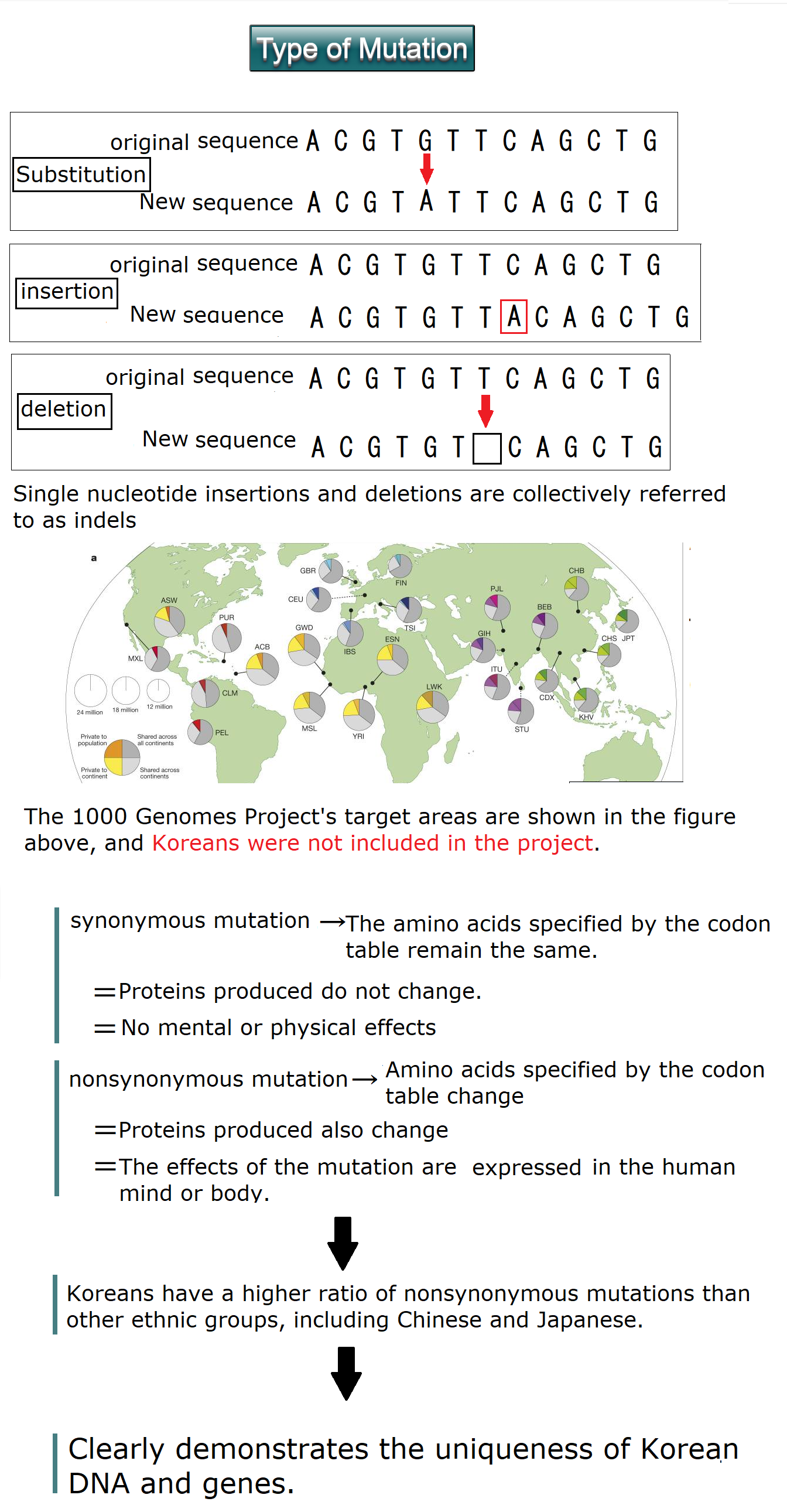
I compared a gene list (=excel file) which FDA extracted genetic mutations peculiar to Koreans and results if searching the gene in the NCBI (National Center for Biotechnology Information) website, I found that many genetic mutations unique to Koreans are highly related with mental disease and neurodegenerative diseases. Details are below.
The overwhelming majority of variants which The Koreans only carry have relation to brain and mental diseases
This is a scientific fact and has no relation to the discrimination against Koreans and Koreans living in Japan (=Korean-Japanese). The human mind is easily changed by the environment, and it is the environment that determines the genetic switch ON/OFF. In other word, It is the interaction of social environment and genetic factors.
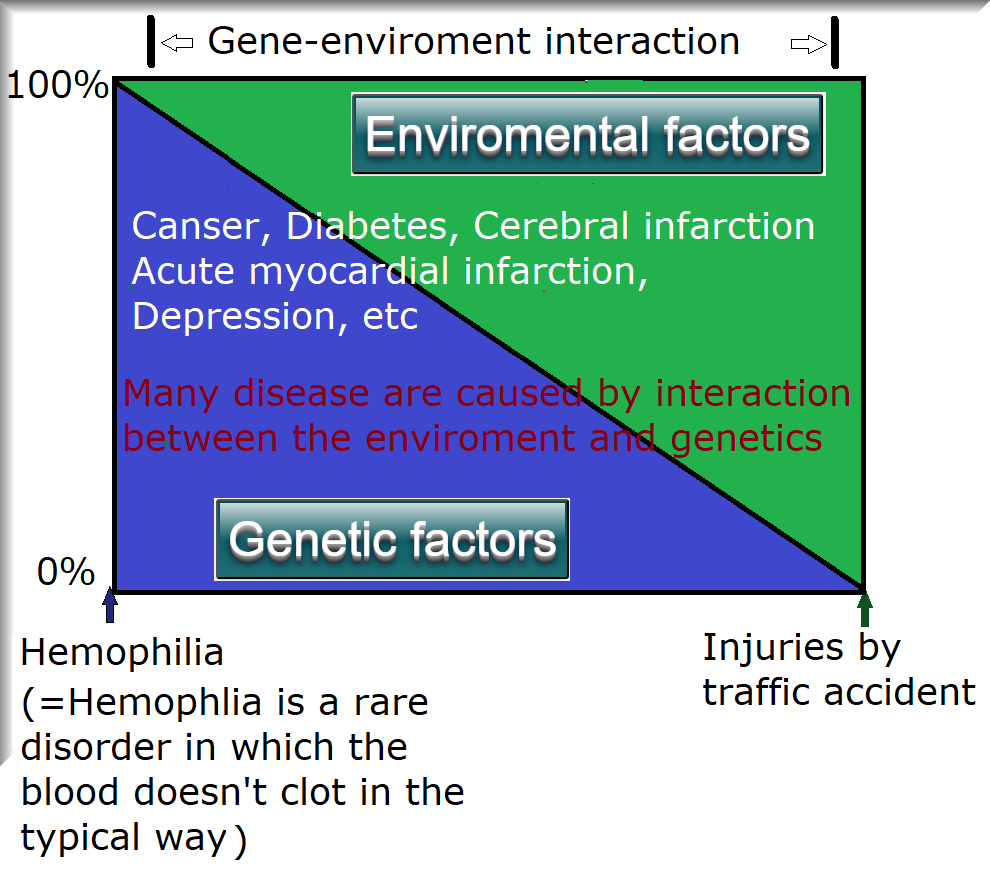
It was only after whole genome sequencing data became available that it became clear that Korean DNA is highly peculiar as ethnic group.
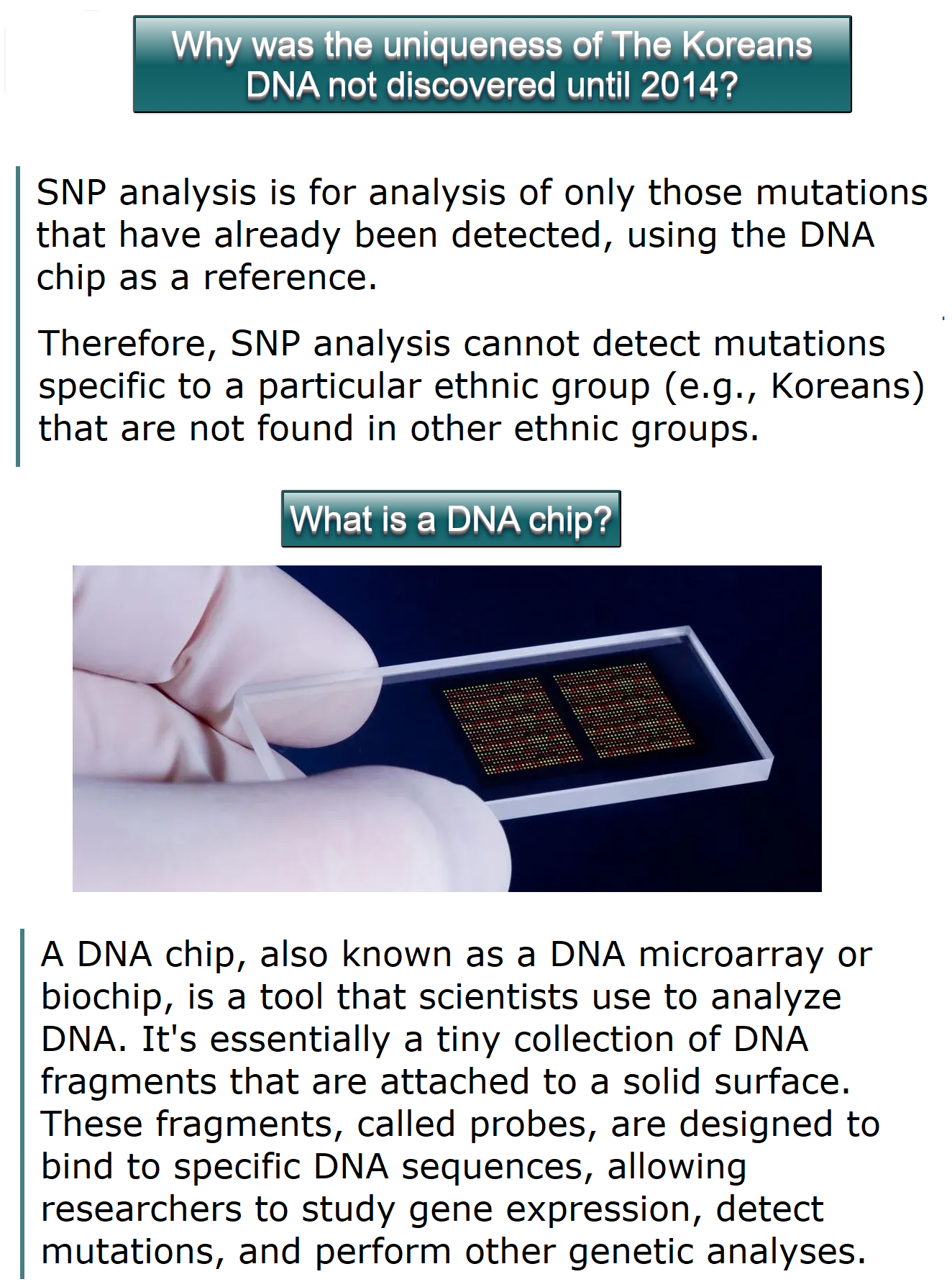
Ethnicity(=ethnic group characteristics) and individuals within a ethnic group are completely different levels of discussion. In particular, it is outrageous to use the content of this article as a basis for discrimination against Korean-Japanese who are completely integrated into Japanese society in the case that Korean-Japanese who live in Japan and have completely severed ties with their “compatriots” (a term used only by Koreans and North Koreans living in Japan).
The Korean's collective mental characteristics and "insane society" are as one of Koreans gene expression
We Japanese should be aware of the following points:
 (1) The
world's lowest birth rate = a decline to a level that would be
absolutely unthinkable in peace time (according to the South Korean
government)
(1) The
world's lowest birth rate = a decline to a level that would be
absolutely unthinkable in peace time (according to the South Korean
government) (2) The world's highest suicide rate (according to the
OECD)
(2) The world's highest suicide rate (according to the
OECD) (3) Not only are there no science-related Nobel Prize winners, but
there are
almost no winners of any of the 63 international science-related
awards.
(3) Not only are there no science-related Nobel Prize winners, but
there are
almost no winners of any of the 63 international science-related
awards.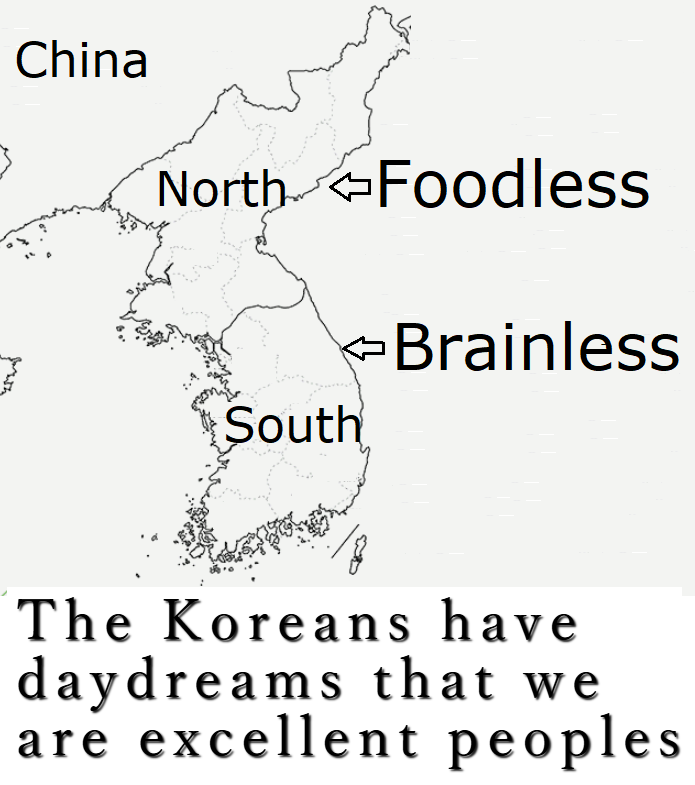
 (4) It is certain that South Korea is effectively the world's number
one “country rife with fraud.”(according to the author's research).
(4) It is certain that South Korea is effectively the world's number
one “country rife with fraud.”(according to the author's research). (5) A special social environment where “lies and deception” are
rampant = the fundamental cause of an abnormally education-oriented
society (based on various media reports)country rife with fraud
(5) A special social environment where “lies and deception” are
rampant = the fundamental cause of an abnormally education-oriented
society (based on various media reports)country rife with fraud (6) Samsung, South Korea's largest company, is sued
for patent infringement once every 4.2 days (according to an article
in the Chosun Ilbo).
(6) Samsung, South Korea's largest company, is sued
for patent infringement once every 4.2 days (according to an article
in the Chosun Ilbo). (7) Half of Koreans have some form of
personality disorder (according to an article in the JoongAng Ilbo).
(7) Half of Koreans have some form of
personality disorder (according to an article in the JoongAng Ilbo). (8)
The US State Department has issued a special warning about sexual
assault when traveling to South Korea. No such warning has been issued
for countries such as China, Japan, Germany, and France (according to
the US State Department website).
(8)
The US State Department has issued a special warning about sexual
assault when traveling to South Korea. No such warning has been issued
for countries such as China, Japan, Germany, and France (according to
the US State Department website).
Sexual Assault: The Embassy regularly receives reports of sexual assault from U.S. citizens. Most cases involved young women assaulted by acquaintances they met on social media, dating, or messaging apps. Alcohol is often involved, and Korea’s low overall crime can create a false sense of security. Specialized hospital units and police are available in South Korea to assist victims, however services in English and responsiveness to the crime are not always consistent. In general, sex crimes are not punished as harshly in South Korea as in the United States and the road to prosecution is a challenging one for victims.
Not only the United States, but also the Canadian government has posted a warning about sexual assault against South Korea on its official website.

Women’s safety
Women travelling alone may be subject to certain forms of harassment. Sexual assault and harassment do occur, particularly around bars and nightlife areas, such as Itaewon and Hongdae-Ipgu.
Local authorities may not always respond adequately to reports of sexual violence and harassment. If you are sexually assaulted, you should report it immediately to local authorities and to the nearest Canadian government office.
- ・Avoid travelling alone, especially at night
- ・Remain vigilant
- ・Be careful when dealing with strangers or recent acquaintances
 (9) An abnormal obsession with human appearance and faces and the extreme "Lookism", that is, prejudice or discrimination toward people who are considered to be physically unattractive and emphasize person’s physical appearance
with neglecting intelligence and abilities.
(9) An abnormal obsession with human appearance and faces and the extreme "Lookism", that is, prejudice or discrimination toward people who are considered to be physically unattractive and emphasize person’s physical appearance
with neglecting intelligence and abilities.According to the following paper by Professor Ruth Holiday, social anthropologist at the University of Leeds, South Korea is a "Cosmetic surgery powerhouse" where cosmetic surgery is extremely popular. As quoted below, people casually visit walk-in cosmetic surgery clinics in South Korean shopping malls, just as they would visit a hair salon or nail salon in the UK, for procedures such as double eyelid surgery.
Therefore, it is very common for Korean kids to have faces that look nothing like either of their parents who underwent cosmetic surgery, moreover, In Korea, it is becoming popular for grandparents to give their grandchildren huge money at the time of high school graduation to cover the high cost of cosmetic surgery, such as the picture below, which can change the facial frame structure(=jawline). Can we, humans around the world call it as normal society.
Gender, Globalization and Aesthetic Surgery in South Korea
Ruth Holliday et al. May 24, 2012
Cited from the above paper
This article explores the unusually high levels of cosmetic surgery in South Korea for both women and men. (In the middle, omitted) Cosmetic surgery and skin treatment clinics are now commonplace in urban shopping malls, viewed much like nail and beauty salons in the UK, and providing procedures such as laser removal of blemishes to ‘walk-in’ customers. (In the middle, omitted) This is evidenced in the prevalence of walk-in cosmetic surgery clinics in large shopping malls, as well as the affordability and ease of obtaining minor operations, such as mole and skin blemish removals. (In the middle, omitted) Moreover, cosmetic treatments and caring for one’s appearance are becoming increasingly associated with a new kind of contemporary masculinity that is gaining in value across East Asia, popularized by boy bands and popular actors with apan-Asian fan base.
This article explores the unusually high levels of cosmetic surgery in South Korea for both women and men. (In the middle, omitted) Cosmetic surgery and skin treatment clinics are now commonplace in urban shopping malls, viewed much like nail and beauty salons in the UK, and providing procedures such as laser removal of blemishes to ‘walk-in’ customers. (In the middle, omitted) This is evidenced in the prevalence of walk-in cosmetic surgery clinics in large shopping malls, as well as the affordability and ease of obtaining minor operations, such as mole and skin blemish removals. (In the middle, omitted) Moreover, cosmetic treatments and caring for one’s appearance are becoming increasingly associated with a new kind of contemporary masculinity that is gaining in value across East Asia, popularized by boy bands and popular actors with apan-Asian fan base.
I think that British social anthropologists seem to have already noticed Koreans' unusual obsession with faces in 2012, as quoted above.
Are we, East Asians, excluding the Chinese, “so foolish” = “the utmost limits of human stupidity”?
Particularly, young Japanese women should be aware of that the rape warnings issued by the US and Canadian governments specifically for travel to South Korea and "real truth of South Korea society".
Where does the cause lie? I have no choice but to say that the answer can only be found in Korean DNA.
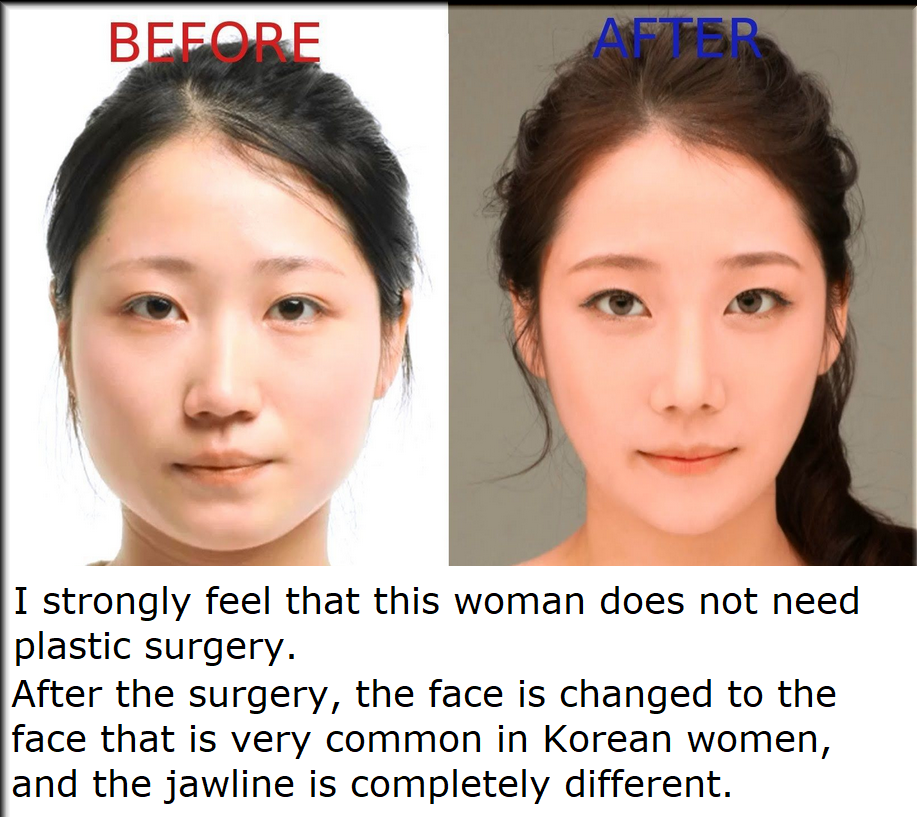
We, The Japanese must recognize the abnormality and strangeness of Korean society.
Anomalies in the distribution of genetic mutations among Koreans
There is a list of abbreviations at the end of the paper.
SNV:single nucleotide variant
SNV-1:SNVs detected in at least one of the 35 Korean individuals but not included in either HapMap or 1KGP
SNV-35:SNVs detected in all of 35 Korean individuals but not included in either HapMap or 1KGP
According to the paper, the total amount of DNA mutations (SNVs = single nucleotide variants) unique to Koreans, that is, the total amount of Korean DNA mutations (SNVs) that only Koreans carry and that other ethnic groups (populations) such as Japanese and Chinese don't carry, is 1,213,613, and is distributed among the 35 samples as shown in the figure below.
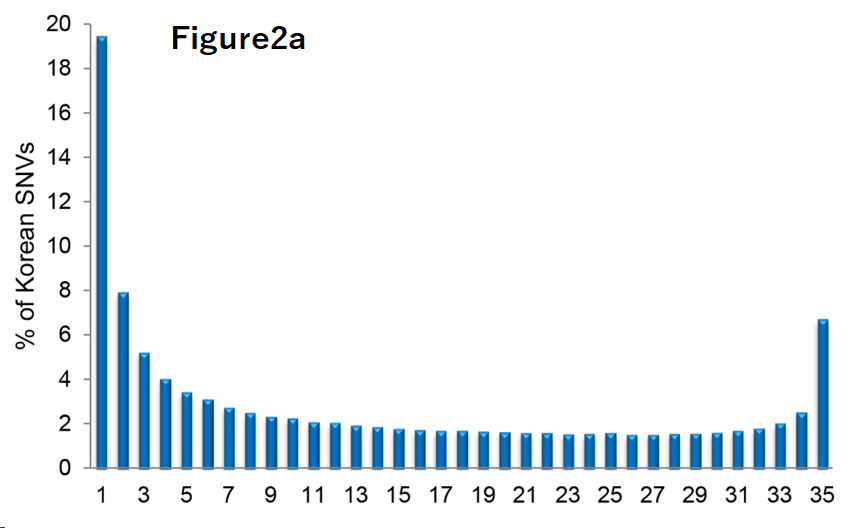
The 35 samples are completely healthy individuals. In other words, they appear to be “normal people.” However, in the case of Koreans, three of the 35 individuals (sample numbers 1, 2, and 35) have a high number of single nucleotide variants that are unique to Koreans.Although sample size of FDA paper is small, this is a characteristic of Korean DNA. Using a simple formula to estimate the proportion of individuals with a high number of SNV mutations specific to Koreans in The Koreans, based on the ratio of 3/35 in the sample = 0.085714, the range is 0% to 17.84%, meaning that there may be a maximum of around 18%..
The US Food and Drug Administration have insisted that
(1) Non-synonymous mutations (=mutations that actually have an effect) associated with diseases not found in other ethnic groups are present at a higher rate in Koreans than in other ethnic groups.
(2) DNA analysis has revealed that even among Koreans, there are individuals with extremely carry many Koreans-specific SNV(=single nucleotide variant ).
Based on the above two points, authors who are FDA(=U.S. Food and Drug Administration) employee argued that special attention should be made for The Koreans in personalized medicine.
The figure below was created by the author of this article from supplementary materials in a paper of single nucleotide polymorphisms in Japanese, Chinese, Korean, and Mongolian populations in order to prevent misunderstanding.
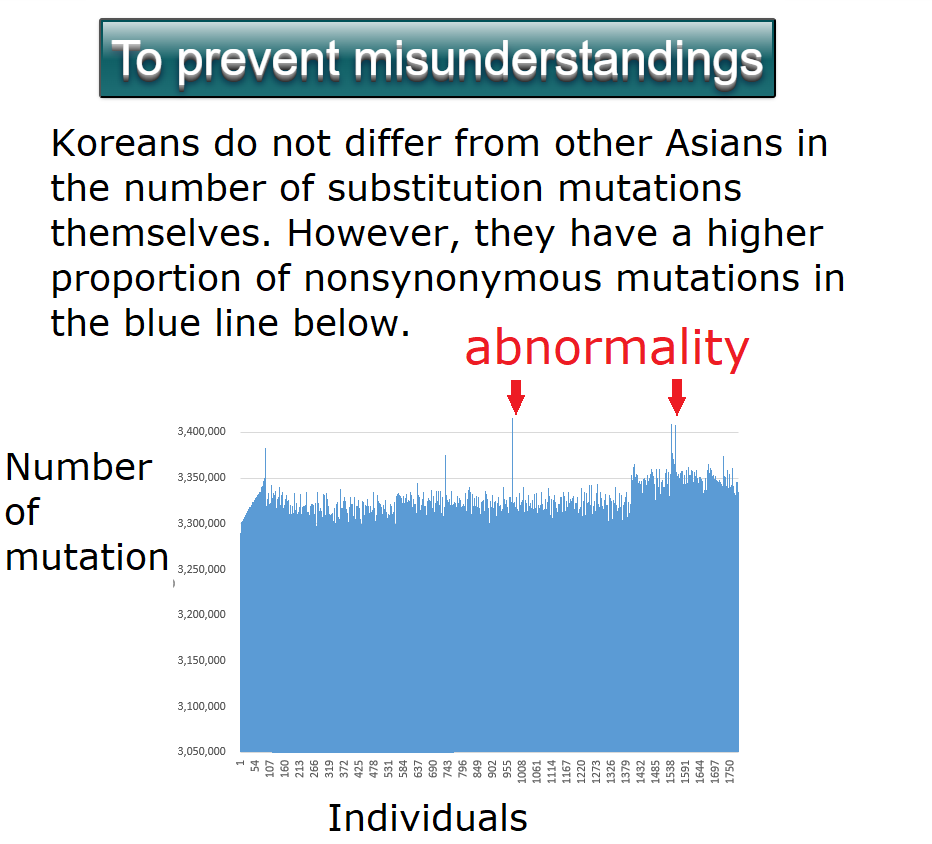
[notes]
The author of this article made the above figure, basing on appendix data in "NARD: whole-genome reference panel of 1779 Northeast Asians improves imputation accuracy of rare and low-frequency variants"
Once again, I will quote directly from the FDA paper. Please read the English quote for yourself.
(1) In contrast with the SNVs common to other populations in HapMap and 1KGP, the Korean only SNVs had high percentages of non-silent variants, emphasizing the unique roles of these Korean only SNVs in the Korean population.
Specifically, we identified 8,361 non-synonymous Korean only SNVs, of which 58 SNVs existed in all 35 Korean individuals.
(2) Based on our analysis, we hypothesize that Koreans might have different responses to the above mentioned terms-related drugs, when compared to other populations.
(3) Therefore, we rationally conjectured that Korean only SNVs prevalent across many of the individuals would be more important for treating Koreans differently from other populations in the personalized medicine.
(4) Therefore, we inferred that special attention should be made for the Korean population when treated for the above mentioned terms related diseases, since other populations did not carry those Korean only SNVs.
Specifically, we identified 8,361 non-synonymous Korean only SNVs, of which 58 SNVs existed in all 35 Korean individuals.
(2) Based on our analysis, we hypothesize that Koreans might have different responses to the above mentioned terms-related drugs, when compared to other populations.
(3) Therefore, we rationally conjectured that Korean only SNVs prevalent across many of the individuals would be more important for treating Koreans differently from other populations in the personalized medicine.
(4) Therefore, we inferred that special attention should be made for the Korean population when treated for the above mentioned terms related diseases, since other populations did not carry those Korean only SNVs.
The above citations is the core part of the paper, and it is important to note that the FDA strictly distinguishes between the terms “hypothesize” (statments of several drugs), “conjecture” (statments of personalized medicine), and “infer” (statments of several diseases).
Why do Koreans have significantly more non-synonymous mutations than other ethnic groups?
Why are mutations clearly concentrated among certain Koreans?
The causes of these phenomena remain unknown, but they have been confirmed in other papers written by Koreans, so there is no doubt about them.

Click on the image to view the article distributed by AFP (a major French news agency). The results of the OECD's Program for the International Assessment of Adult Competencies (PIAAC) have received little media coverage in South Korea.
The author of this article is merely a population genetics enthusiast, so I will quote a very easy-to-understand explanation written by Professor Naruya Saito of the National Institute of Genetics and other distinguished members regarding how non-synonymous mutations differ from synonymous mutations.
(1) Cited from “63 Great Questions in Anthropology” (supervised by the Education and Outreach Committee of the Japanese Anthropological Association)
p130
Evidence of natural selection left in genes
[There are two types of mutations: those that change the function of proteins (nonsynonymous mutations) and those that do not (synonymous mutations). Non-synonymous mutations affect protein function and are therefore more strongly influenced by natural selection than synonymous mutations. Non-synonymous mutations and synonymous mutations occur with equal probability during gamete formation, but because they are subject to different rates of natural selection, there is a difference in their likelihood of being passed on within a population. From this, genes in which the number of non-synonymous mutations and synonymous mutations differ significantly within a population, and genes in which the ratio of non-synonymous mutations to synonymous mutations differs between populations, are likely to have undergone natural selection.]
Evidence of natural selection left in genes
[There are two types of mutations: those that change the function of proteins (nonsynonymous mutations) and those that do not (synonymous mutations). Non-synonymous mutations affect protein function and are therefore more strongly influenced by natural selection than synonymous mutations. Non-synonymous mutations and synonymous mutations occur with equal probability during gamete formation, but because they are subject to different rates of natural selection, there is a difference in their likelihood of being passed on within a population. From this, genes in which the number of non-synonymous mutations and synonymous mutations differ significantly within a population, and genes in which the ratio of non-synonymous mutations to synonymous mutations differs between populations, are likely to have undergone natural selection.]
In other words, the high ratio of non-synonymous mutations in Korean genes means that, overall, Koreans are subject to much stronger negative natural selection pressure than other ethnic groups.
(2) Cited from a genetics paper published in Nature with a sample size of over 60,000.
Analysis of protein-coding genetic variation in 60,706 humans
Nature Published: 17 August 2016
Monkol Lek et al.
[Deleterious variants are expected to have lower allele frequencies than neutral ones, due to negative selection. This theoretical property has been demonstrated previously in human population sequencing data12,13 and here (Fig. 1d, e).]
The figure below is from the detailed supplementary materials published in a paper by the US Food and Drug Administration (FDA). (It is not included in the main text.)
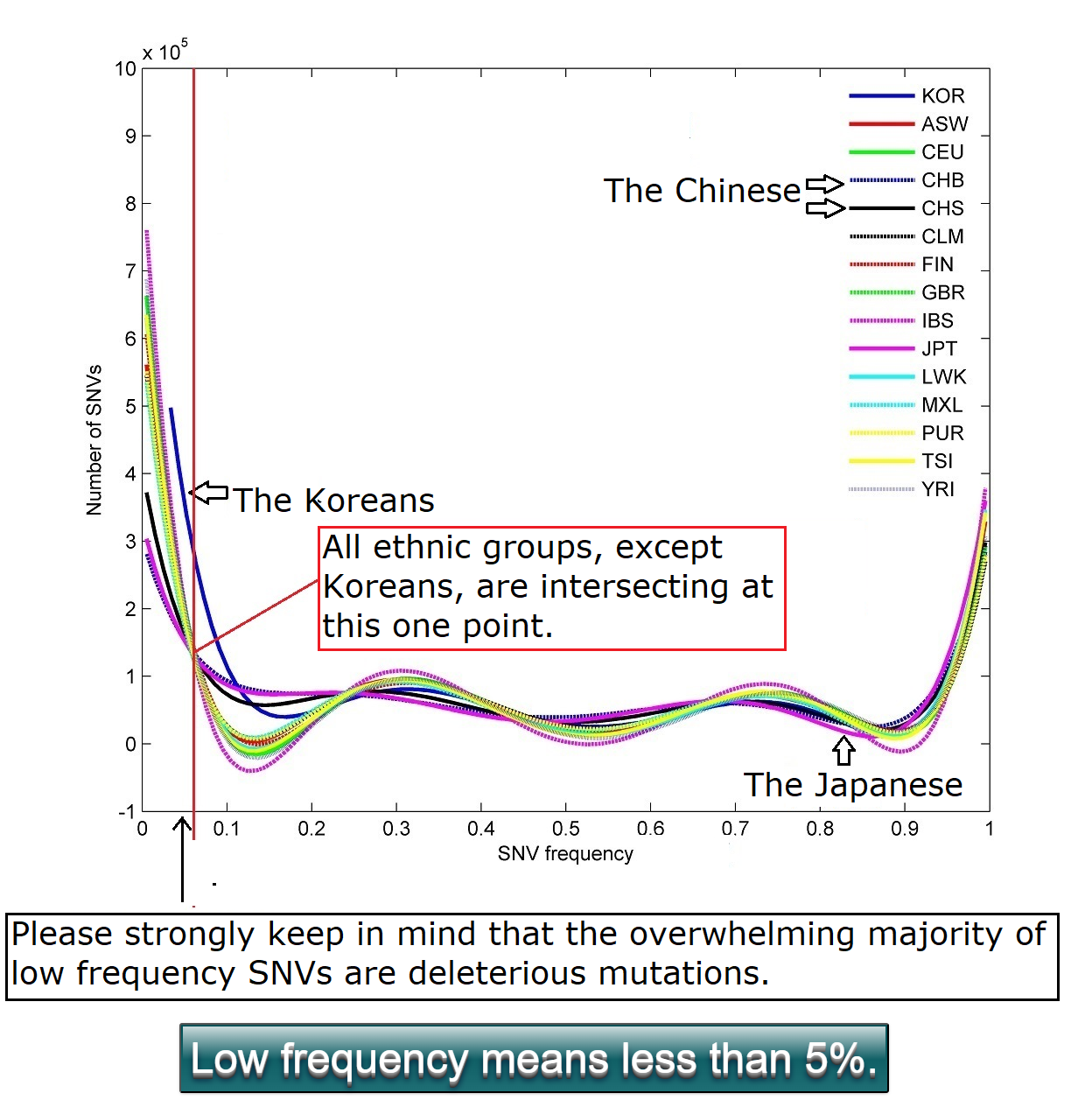
 The abbreviations for ethnic names in the images are as follows.
The abbreviations for ethnic names in the images are as follows.KOR (Korean), ASW (African American), CEU (European American), CHB (Chinese, Beijing), CHS (Chinese, Southern), CLM (Colombian, Africa), FIN (Finnish), GBR (British), IBS (Spanish), JPT (Japanese), LWK (Kenyan, Africa), MXL (Mexican American), PUR (Puerto Rican), TSI (Italian), YRI (Nigerian).
 The graph above
shows the frequency and number of mutations, clearly illustrating the
uniqueness of Korean DNA, which can be considered abnormal when
compared to other ethnic groups .
The graph above
shows the frequency and number of mutations, clearly illustrating the
uniqueness of Korean DNA, which can be considered abnormal when
compared to other ethnic groups .Even in a population genetics paper by Koreans, the specificity of the mutation distribution is clearly stated.
Korean National Standard Reference Variome database of whole genomes with comprehensive SNV, indel, CNV, and SV analyses
Nature Published: 04 April 2018
Jungeun Kim et al.
Cited from the above paper published in Nature (authored by a Korean). This statement effectively acknowledges that deleterious variants (=mutations) have spread within The Koreans.
Cited from the above paper
Surprisingly, however, roughly half of the variants in ‘1000GP low frequency’ were classified as ‘frequent in KoVariome’. This indicates that there exist a significant population specific biases for common and uncommon variants.
Surprisingly, however, roughly half of the variants in ‘1000GP low frequency’ were classified as ‘frequent in KoVariome’. This indicates that there exist a significant population specific biases for common and uncommon variants.
Furthermore, not only the FDA paper but also the following paper by Korean researchers clearly states that Korean DNA has a significantly higher rate of non-synonymous mutations compared to other ethnic groups.
Extensive genomic and transcriptional diversity identifiedthrough massively parallel DNA and RNA sequencing of eighteen Korean individuals
Young Seok Ju et al.
2011
Cited from the above paper
A subset of the nsSNPs showed remarkably high allele frequencies among the Koreans studied compared to other populations, including Europeans and west Africans represented in the HapMap project.
A subset of the nsSNPs showed remarkably high allele frequencies among the Koreans studied compared to other populations, including Europeans and west Africans represented in the HapMap project.
The US Food and Drug Administration has pointed out a shocking fact.
Humans originated in Africa , each individual has approximately 3.5 to 3.8 million single nucleotide polymorphisms, most of which (more than 85% in the gene region) are substitution mutations. In the case of Africans, Africans each individual has 4.0 to 4.2 million single nucleotide polymorphisms, however, the above fact very clearly indicates that Humans have survived only in Africa for more than 100,000 years without spreading to other continents, because it needs very long periods for accumulation of single nucleotide polymorphisms, in other words, it indisputably is clear evidence of "Single African Origin Theory"(="Out of Africa" theory").
According to the FDA paper, it is truly astonishing that Koreans differ from other ethnic groups even in their DNA substitution mutation patterns.

Cited from FDA paper
[ According to the SNV compositions (Figure 3), we found that the most prevalent changes in all three SNV sets was C:G->T:A transition, the same trend as the raw base substitution mutational spectrum in humans [42].
In addition, we found that Korean SNVs and SNV-1 occurred more frequently at C/G base pairs, which was consistent with previous findings [42].
Nevertheless, almost half of SNV-35 mutations occurred at T/A base pairs. ]
[ According to the SNV compositions (Figure 3), we found that the most prevalent changes in all three SNV sets was C:G->T:A transition, the same trend as the raw base substitution mutational spectrum in humans [42].
In addition, we found that Korean SNVs and SNV-1 occurred more frequently at C/G base pairs, which was consistent with previous findings [42].
Nevertheless, almost half of SNV-35 mutations occurred at T/A base pairs. ]
In fact, Figure 3 above and the red text above imply something frightening when we consider that most of the mutations in the DNA of modern humans are substitution mutations, when viewed in terms of quantity without considering the impact of the mutations.
This is because Koreans are not only extremely unique in terms of their genes, which are the core component of DNA, but also clearly demonstrate that The Koreans have different patterns of substitution mutations in their whole DNA , including non-coding regions.
The graph below in crated by author of this article.

